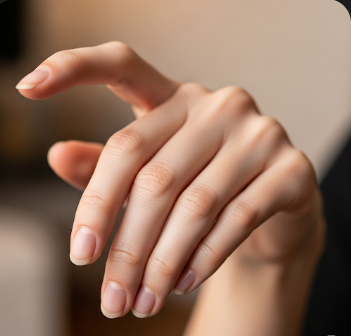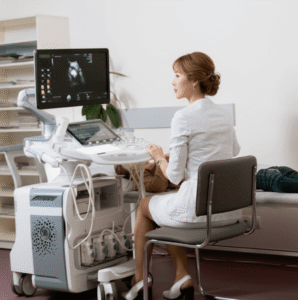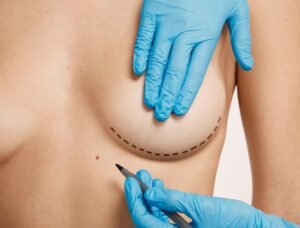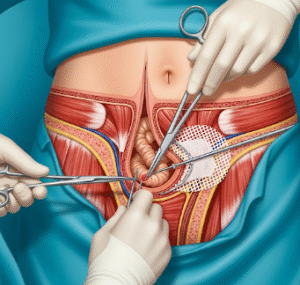Overview
Arachnodactyly, also known as “spider fingers”, is a condition characterized by abnormally long and slender fingers and toes. It is a feature commonly associated with Marfan syndrome, a genetic connective tissue disorder, but can also appear in other syndromes affecting skeletal development.
Individuals with arachnodactyly may experience functional or cosmetic concerns, as well as related complications in joints, cardiovascular system, or musculoskeletal health. In South Korea, genetic and orthopedic clinics provide diagnostic evaluations, treatment options, and supportive care to manage both the physical and potential systemic aspects of the condition.
Key Facts
Highlights:
➡️ Arachnodactyly is characterized by unusually long, thin fingers and toes with a spider-like appearance.
➡️ It is often a sign of underlying connective tissue disorders, most notably Marfan syndrome.
➡️ Can affect hand function, grip strength, and fine motor skills in some individuals.
➡️ Early detection helps manage associated cardiovascular, skeletal, and ocular complications.
➡️ South Korea offers genetic testing, orthopedic care, and multidisciplinary management for affected patients.
What is Arachnodactyly?
Arachnodactyly is a physical manifestation of skeletal elongation, typically involving:
- Long, thin fingers and toes
- Positive “wrist sign”: thumb and little finger overlap when wrapped around the wrist
- Positive “thumb sign” (Steinberg sign): thumb extends beyond the edge of the palm when clenched
While the condition itself does not always cause functional impairment, it may indicate Marfan syndrome, homocystinuria, or other genetic connective tissue disorders, which require monitoring for potential systemic complications.
What Symptoms are Related to Arachnodactyly?
Symptoms related to arachnodactyly include:
- Abnormally long and slender fingers and toes
- Joint hypermobility, leading to flexibility or dislocations
- Reduced grip strength or fine motor difficulties
- Pain or fatigue in hands or feet due to structural elongation
- Possible curvature of the spine (scoliosis)
- Association with cardiovascular abnormalities in syndromic cases, such as aortic dilation or mitral valve prolapse
- Occasionally, visual problems like lens dislocation in Marfan syndrome
What Causes / Possible Causes of Arachnodactyly?
Highlights:
➡️ Marfan Syndrome: Most common genetic disorder associated with long, slender fingers and systemic connective tissue involvement.
➡️ Homocystinuria: Rare inherited metabolic disorder that can cause similar skeletal features.
➡️ Congenital Factors: Some individuals may present with isolated arachnodactyly without systemic disease.
➡️ Genetic Mutations: Alterations in FBN1 gene (Marfan) or other connective tissue-related genes.
➡️ Familial Tendencies: Family history may increase likelihood of occurrence.
➡️ Other Syndromes: Ehlers-Danlos syndrome or Loeys-Dietz syndrome can occasionally feature arachnodactyly.
When Should I See My Doctor?
Highlights:
➡️ If abnormally long fingers or toes are noticed at birth or during childhood.
➡️ If associated with joint hypermobility, scoliosis, or skeletal abnormalities.
➡️ For evaluation of potential underlying genetic conditions like Marfan syndrome.
➡️ If there are cardiovascular symptoms such as chest pain, palpitations, or shortness of breath.
➡️ For functional issues affecting hand use, grip, or dexterity.
➡️ To receive guidance on monitoring, genetic counseling, and preventive care.
Care and Treatment
Management of arachnodactyly depends on whether it occurs in isolation or as part of a syndrome.
Highlights:
➡️ Genetic Evaluation: Identify underlying conditions like Marfan syndrome or homocystinuria.
➡️ Orthopedic Assessment: Monitor joint function, flexibility, and skeletal development.
➡️ Physical Therapy: Exercises to improve grip strength, coordination, and joint stability.
➡️ Surgical Intervention: Rarely needed for severe functional impairment or deformities.
➡️ Cardiovascular Monitoring: For syndromic cases, regular echocardiograms and cardiology follow-up are essential.
➡️ Lifestyle Adjustments: Safe exercise routines, avoiding activities that strain joints, and ergonomic adaptations.
➡️ Patient Education: Understanding signs of systemic complications and strategies to maintain hand and joint health.
Treatment Options in Korea
South Korea offers advanced care for arachnodactyly through genetic, orthopedic, and multidisciplinary clinics.
Highlights:
➡️ Genetic Testing and Counseling: Identification of FBN1 mutations or other connective tissue disorders.
➡️ Orthopedic and Hand Clinics: Specialized care for skeletal alignment, joint function, and fine motor skills.
➡️ Cardiology Support: Monitoring and preventive care for associated cardiovascular complications in Marfan syndrome.
➡️ Physical and Occupational Therapy: Structured programs to enhance hand function, strength, and coordination.
➡️ Surgical Consultation: Access to reconstructive or corrective surgery if functional impairment occurs.
➡️ Multidisciplinary Care: Collaboration between geneticists, orthopedic surgeons, cardiologists, and therapists for holistic management.
➡️ Medical Tourism Support: Multilingual services, structured treatment plans, and follow-up care for international patients.












